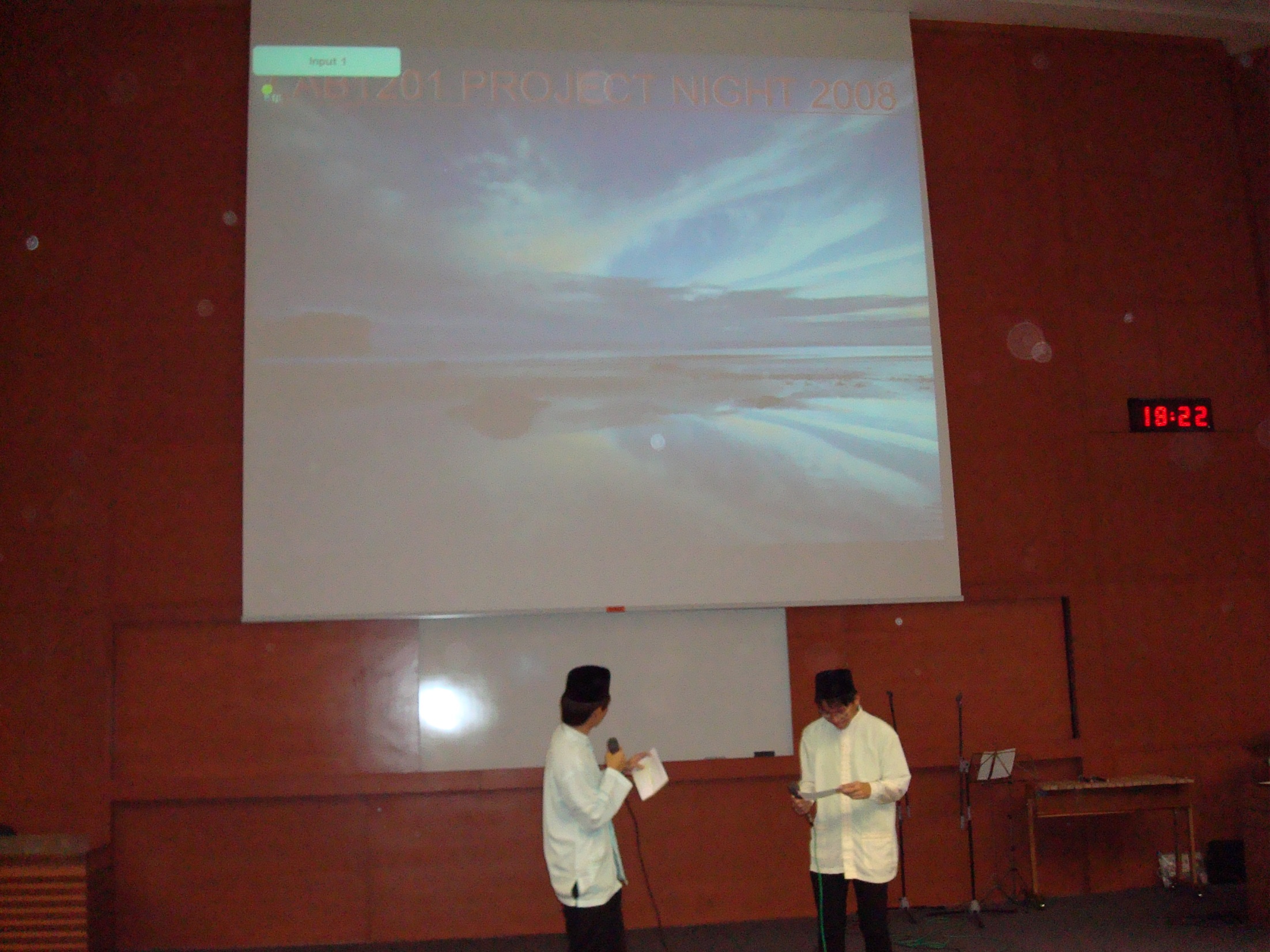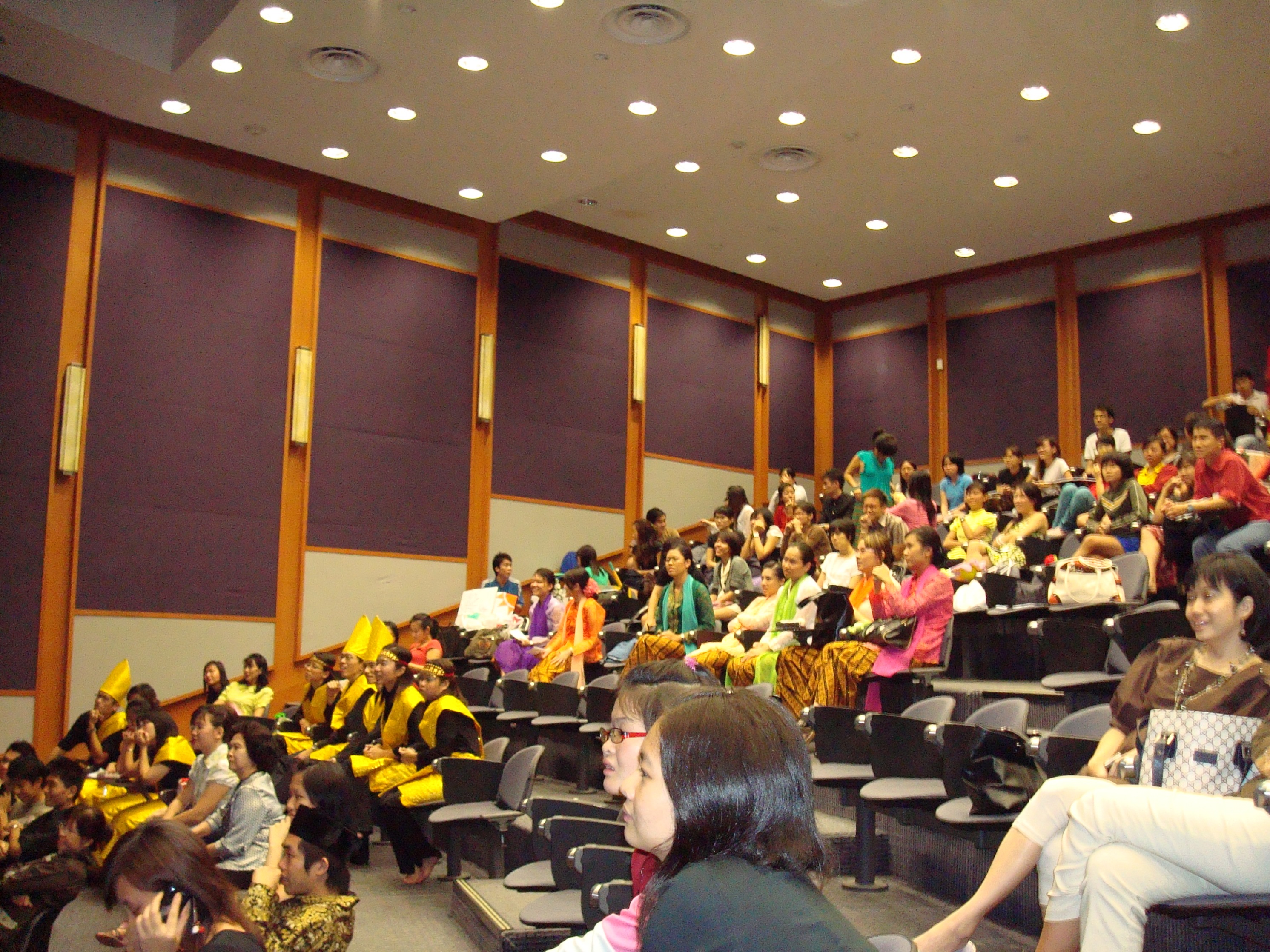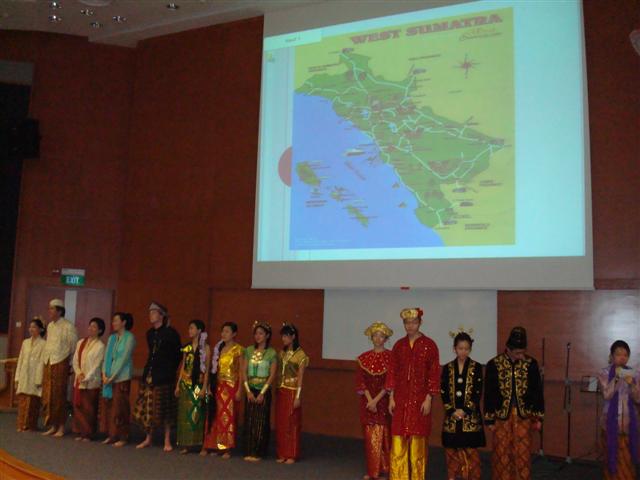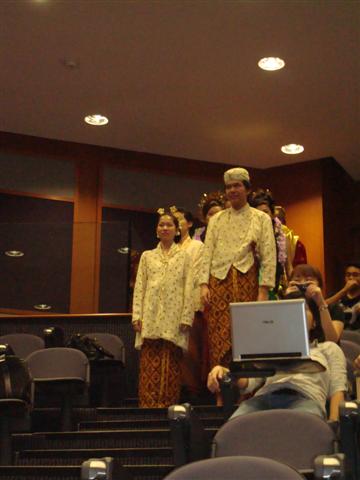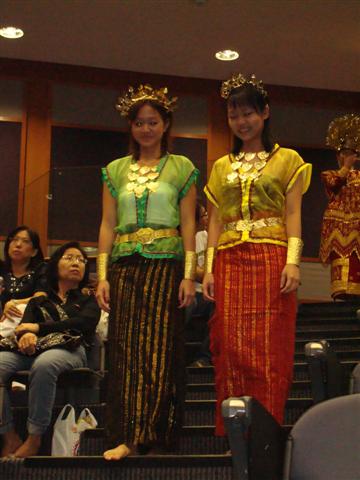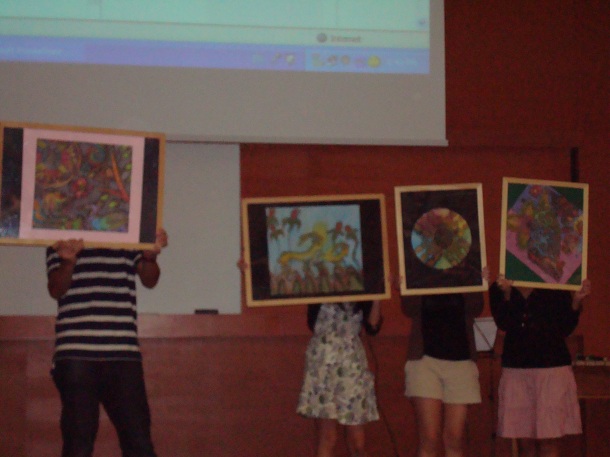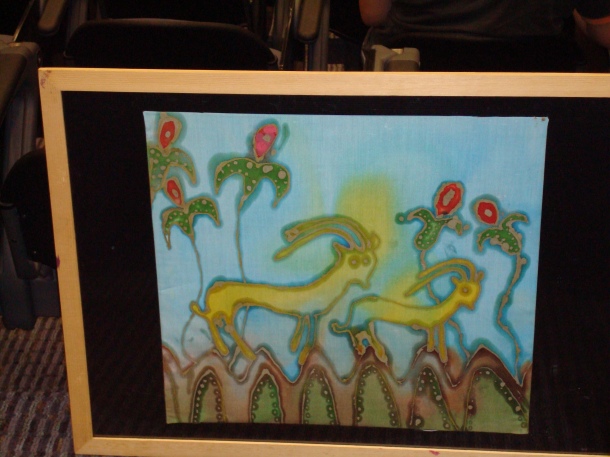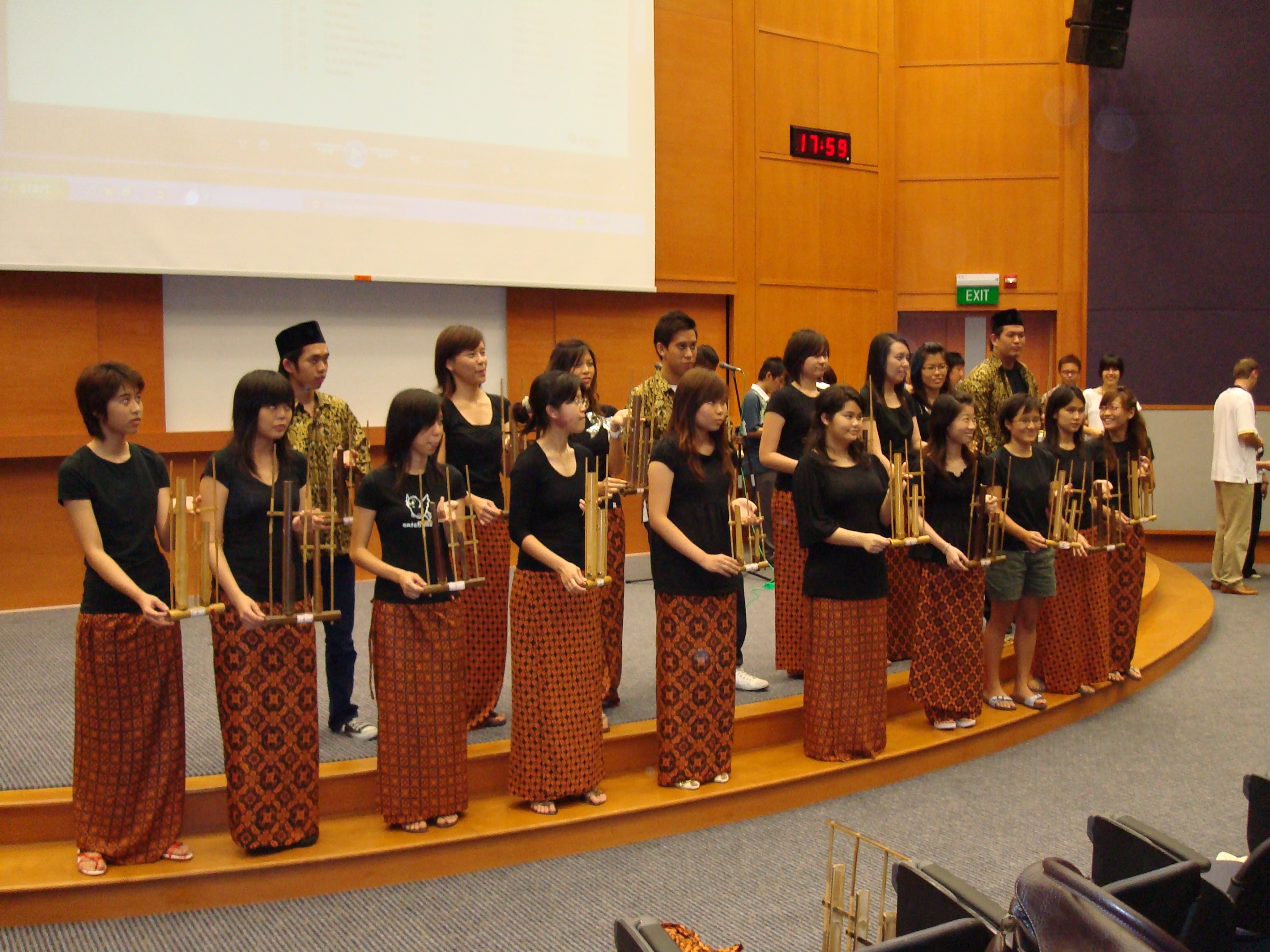
Pelangi di bumi Indonesia
On the evening of 19th March 2008, about 200 students and teachers of Bahasa Indonesia attended the special event named “Pelangi di bumi Indonesia”, which means “the rainbow in the Indonesian earth”. It was a 2 hour event held at LT 8 At the event, different groups presented on stage various items symbolizing part of Indonesian culture. These items include musical items such as Singing, Angklung and Kulintang, dances such as Javanese Dance, Maluku Dance and Saman Dance, as well as presentation of other programmes such as Batik making, cooking, Jumputan, Indonesian folktale play and a display of traditional Indonesian costumes.
The MCs for this special night..
Ibus and students alike eagerly awaiting the start of the programme..
Logistic March 26, 2008
The logistic team is vital in ensuring the success of the whole project presentation. Some of the tasks that the logistic team is responsible for include doing the decorations, creating the banner, compiling the scrapbook and creating this website.
This is what some of the logistic members said:
“It was fun and interesting and we learnt how to make origami.” – Weiling
“It was refreshing to get a first hand experience at doing preparation and background work for a big event. Learning to work with a group of strangers and helping each other out was certainly a great experience. And I never expected to be able to make a ketupat all by myself!” – Rui Qing
“What I enjoyed most is the experience of making new friends and working together in the tasks at hand. Also, enjoyed learning to make ketupats. It was overall fun and fruitful.” – Celeste
Cooking March 25, 2008
Before the presentation night, students went to houses of various’ Ibus to learn how to cook traditional Indonesian dishes. Some of the dishes include Agar-Agar Gula Merah, Bakwan Jagung, Klepon(Sweet rice balls), Talam Ebi, Kue Cantik Manis and Tahu Isi. It was an intriguing experience for many students who have no cooking experience prior to their lessons. Though some found it tedious, many enjoyed the learning process and replied that they would cook such dishes for their loved ones in future.
Agar-Agar Gula merah :
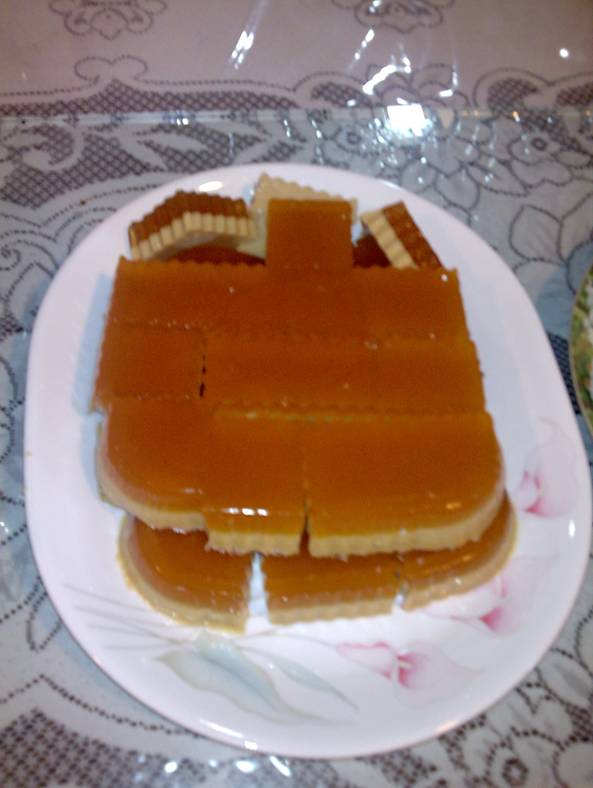
Bakwan Jagung:

Klepon(Sweet rice balls):

Tahu Isi

The group that made Bakso Sayuran and Kue Nangka 
Talam Ebi:
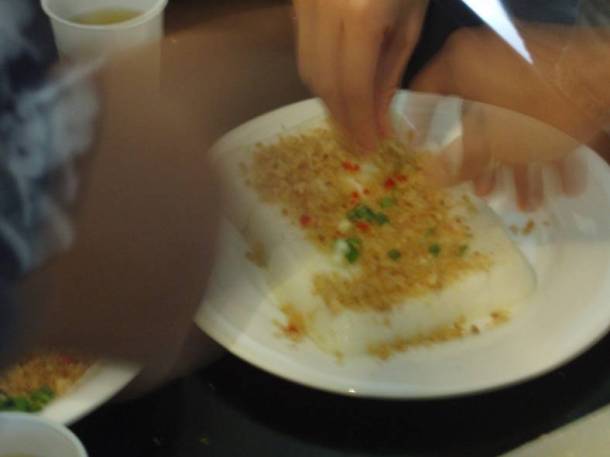
Kue Cantik Manis

Kulintang
Kulintang is a traditional instrument which origins from Southeast Asia countries like Philippines, Malaysia and Indonesia. A group of 4 students from our bahasa Indonesia class has attempted to learn how to play this instrument. Luckily, all 4 of them have some background in music and are able to grasp the skill easily. Furthermore, their tutor is friendly and is patient in teaching and correcting them on their mistakes. As a small group, they build a closer bond and are able to contact each other easily after lesson. They have fun during the lesson and find it fulfilling as they manage to pick up a new skill.

The Kulintang group performing
Saman Dance
Saman dance is a traditional dance from Sumatra. Performing the dance requires a lot of hand-eye coordination and chemistry with the other performers. The performers all feel that doing the dance movement was the hardest but catching the dance beat was also difficult. In addition, building rapport within such a short period of time among everyone was not simple. Some even complained that their limbs hurt after each rehearsal. However, everyone enjoyed in learning to perform the dance and had a great time.
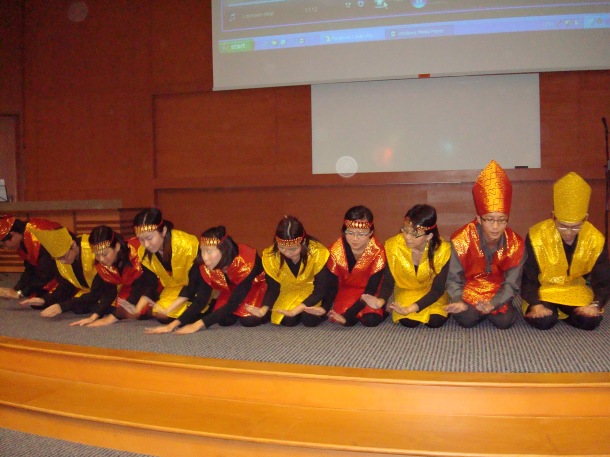
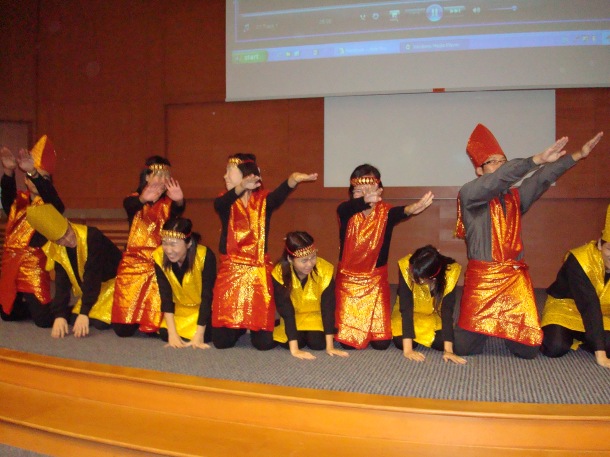
Javanese Dance
Javanese dance, an amazing dance with graceful and delicate movement. The dance allows audience to immerse into a state of relaxation and peace. Needless to say, to be capable of dancing such a remarkable dance would require dancers to possess the abilities to coordinate both hands and legs simultaneously.
On the day of rehearsal for the dance, with each sweep of their hand and each step of their feet, the ladies of Javanese dance together with the guidance from Ibu Christina and started working on the steps and hands movement for the dance. Over and over again, they practiced their movement to the rhythm and beats of the song “Jararun”.
Toward the end of their practice, they proceed to choose the outfit to be worn on the actual day of performance. Determined to display out their best in the performance, the ladies had chosen for themselves the most beautiful kebaya. When ask what had lured them to Javanese dancing, the ladies replied with a heartening answer, “because it is interesting”.
Indeed, the dance had not only provided the ladies the opportunities to learn a traditional dance, it has at the same time given them a chance to be involved with a foreign culture, one that is truly priceless. Seeing the dancers practising with such passion and drive, the audiences would sure to be charmed by their mesmerising dance on the day of performance.
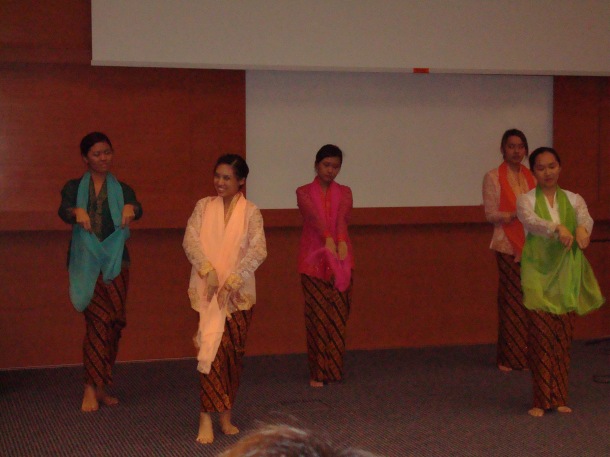
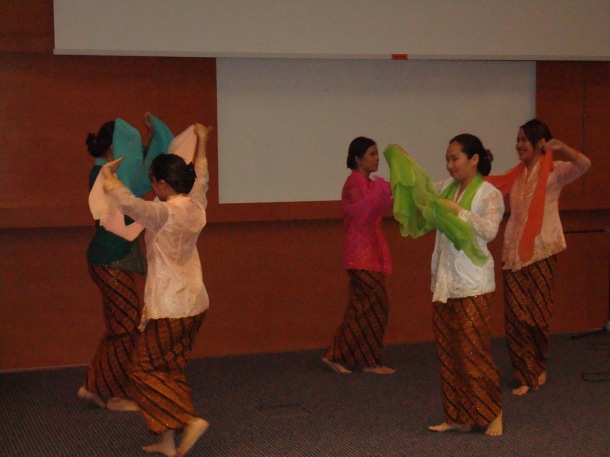
Maluku Dance
The Maluku Dance that this project group is performing originated from Maluku, which is located at the east part of Indonesia. The name of this dance is actually called Tari Gaba-Gaba. This dance is usually done by friends or young people because it is a dance that celebrates friendship that they shared.According to the students interviewed, this dance holds a lot of significance for them. It is because this group was first formed based on the allocation of students via the CORS system. After speaking to most of the members, i realized that they joined this because they did not get their 1st choice, which was cooking. Hence, they were all gathered together in this small congregation due to a lack of personal preference.
However, after the numerous practices they had and the late nights that were sacrificed for the dance, they developed a friendship which was not founded on common ground right from the start and began to know each other on a more personal level. They had forged friendships which would not have been possible if not for this dance,
Even after the event was over, the group was still having talks about meeting up for outings so I guess it was really a dance of friendship!
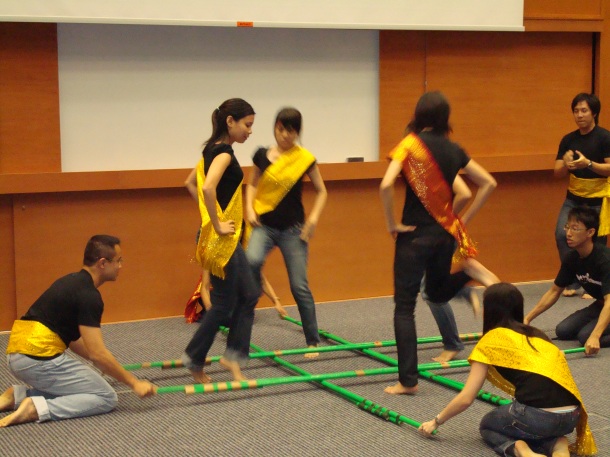
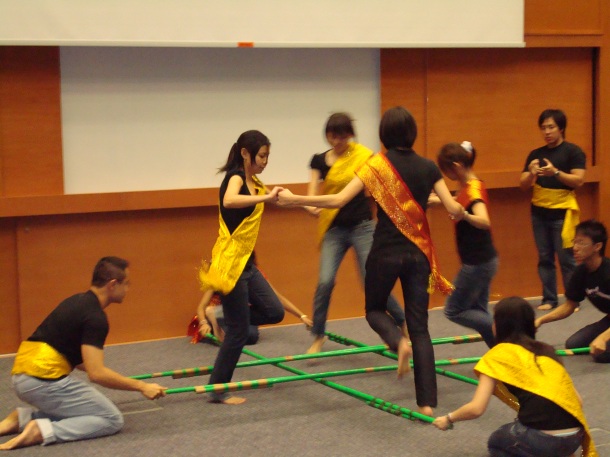
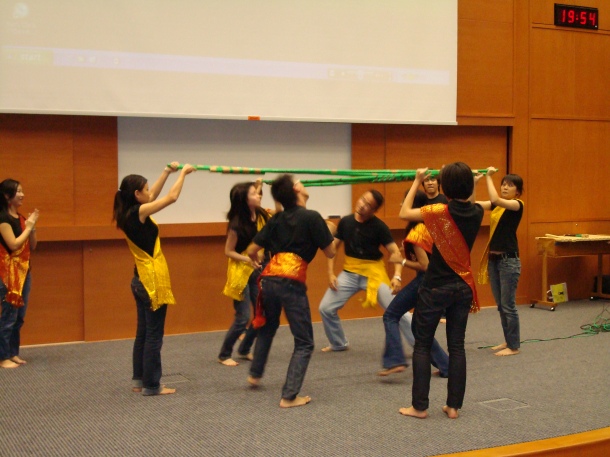
Jumputan
This artwork is formed by tying up the fabric prior to the application of dye. In this way, the dye only reaches parts of the area to which it is applied. The boundaries of the dyed and non-dyed areas are usually blurred as the dye begins to soak into the non-tied sections. Students are given rubber bands, marbles, cloth and dyes as basic materials. They proceed by tying the cloth in different fashions, to achieve their desired patterns or design. At the same time, they have to ensure that the fabric is tied tightly to prevent the dye from entering parts of the fabric they intend to preserve.

Singing
The level of enthusiasm was palpable in LT10 as students gathered together to rehearse and brainstorm the two songs: Playboy and Ketahuan. Popular pop pieces delivered by Indonesian’s hottest boy bands, Playboy is a song about a young man named Tono, who likes seeing girls and is easy to fall in love. Ketahuan, tells of the sequence, where Tono is found out to be two-timing his girl (Tini). However, he cannot get rid of his habit, and even dates Tini’s good friend.
Raptures of laughter and nonsensical merry making were seen amidst active suggestions of funky dance moves to match the catchy tunes. For this performance, the student’s non-exhaustive talents are showcased in song, dance and act. Exemplifying creativity and fun to the fullest, the performance tickles with its zany antics and gets you grooving to the catchy beat.



Play Performance Indonesian Folktales
Laughter can be heard across the room. People talking and instructing, music playing in the background, welcome to the rehearsal of the play performance “Timun Mas”.
The story is about a couple who had difficulty conceiving but were pining for a child. A glimmer of hope appeared when they were presented a cucumber by a giant. This cucumber, Timun Mas will then turn into a baby the next day. The giant reminded the couple that he will be back for the cucumber when the time is ripe.
“The project is the most interesting aspect of the module. It was fun and memorable”- Jian Zhong (Bapak of Timun Mas)
“This project gave me more chances to practise speaking Bahasa Indonesia. The storyline and the acting processes were both fun and funny.”- Alvin (Giant)
“I learnt how to interact with one another better”–Alexandra (Assistant)
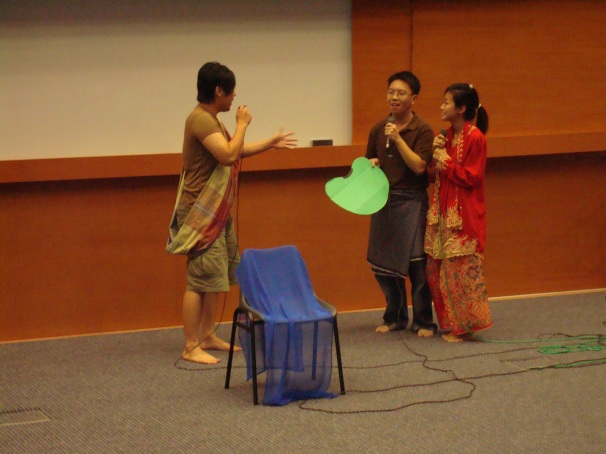
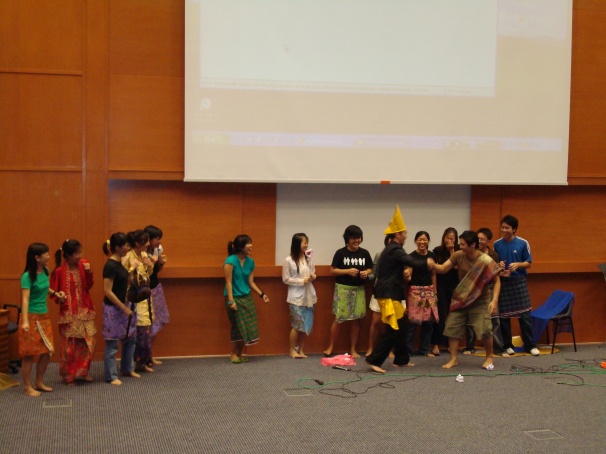
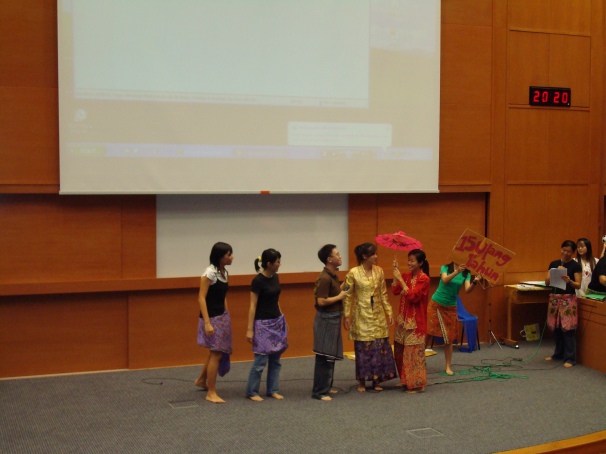
Traditional Indonesian Costumes March 24, 2008
The traditional costumes segment was one of the first items to kick off the start of the event. Costumes from Bali, Padang, and many other parts of Indonesia were presented to the audience. The costumes fromdifferent parts of Indonesia varied greatly and this made the show interesting.
The participants went through 2 meeting sessions, where they learnt how to walk gracefully, with their partner in arm, down the steps. Many of them had to learn to slow down their walking pace. Before they take their places on the stage, they did a customary bow together. They were also taught the intricacies of putting on the costume. One of the participants said, ”The headwear was really awkward to put on, but it was worth the effort as the costume will be incomplete without it”. Another participant also said that it was a great experience for him asit is his first time ‘modelling’ and he will probably not have a similar chance to do so again. Overall, the activity helped the participants understand that Indonesia was a melting pot of different cultures and dialects.
Different type of Traditional Indonesian Costumes:
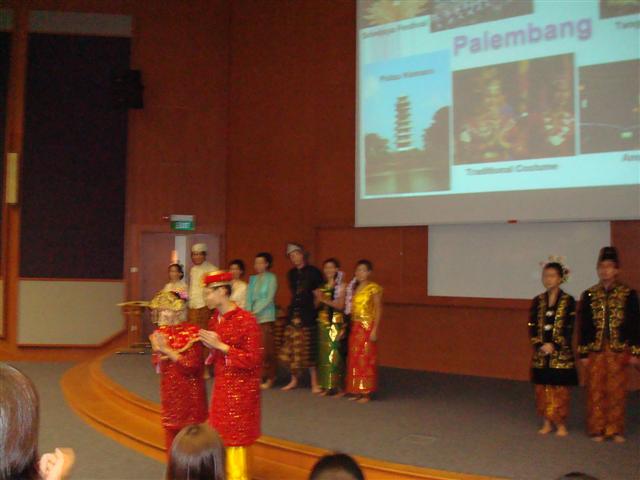
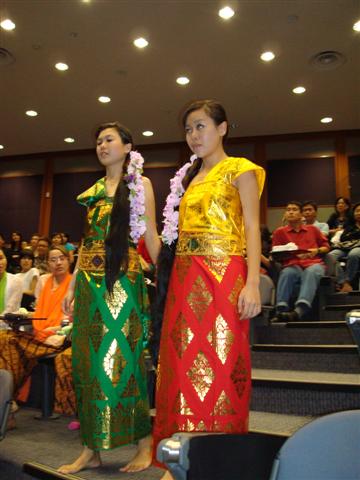
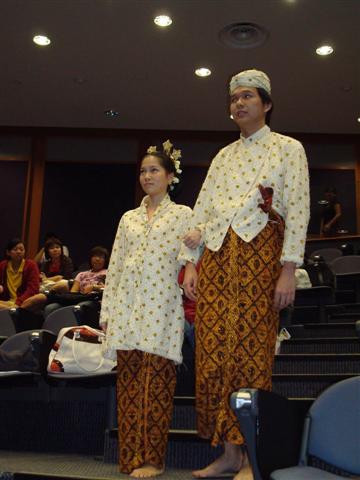

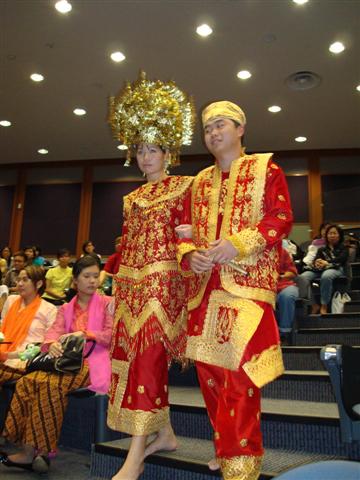
Batik
Batik is the Indonesian art of cloth-printing. It is a very famous art in Indonesia. There are a few procedures in doing the batik. In this project, students have to attend 3 sessions in order to get their batik done.
In the first lesson, students have come out with the outline of the design of the batik. Then, they will apply melted wax onto the outline of the design and wait for it to dry. In the second session, students will be able to apply the colours onto the cloth. And in the last session, they will melt the wax using an iron in order to have a smooth surface on the cloth. After that, they will do some touch on the cloth. Last but not least, students will frame up their batik for display.
Overall, it is a good and fruitful experience for the students to get to know more about Indonesian culture and arts. Some difficulties that students faced are the handling of wax and smudging of paint as they are inexperienced.
Angklung
Angklung is a traditional musical instrument made out of two bamboo tubes attached to a bamboo frame. The tubes are carved so that they have a resonant pitch when struck. The two tubes are tuned to octaves. The base of the frame is held with one hand while the other hand shakes the instrument rapidly from side to side. This causes a rapidly repeating note to sound. Thus each of three or more angklung performers in an ensemble will play just one note and together complete melodies are produced.
